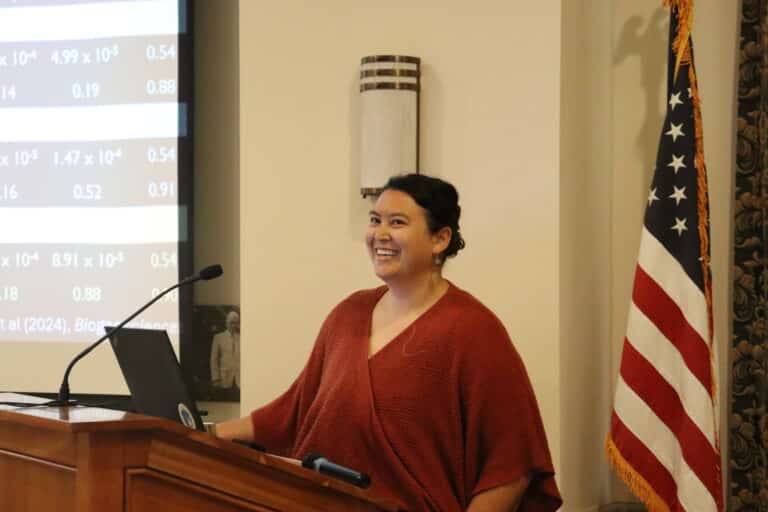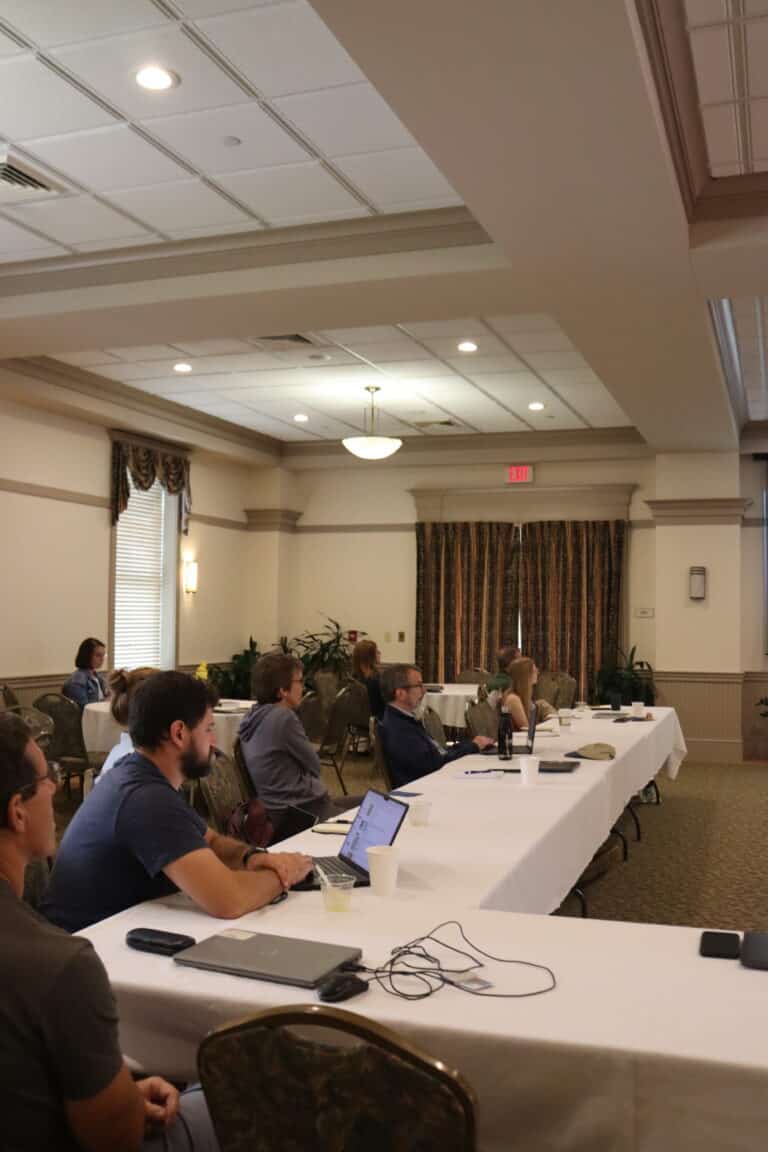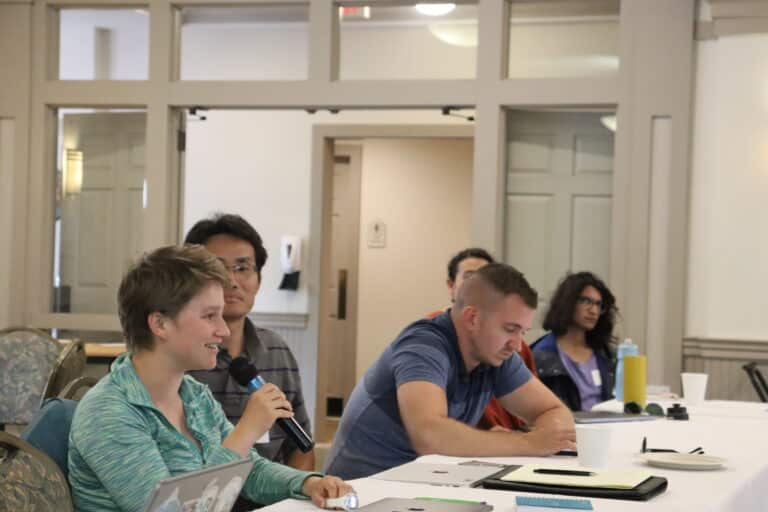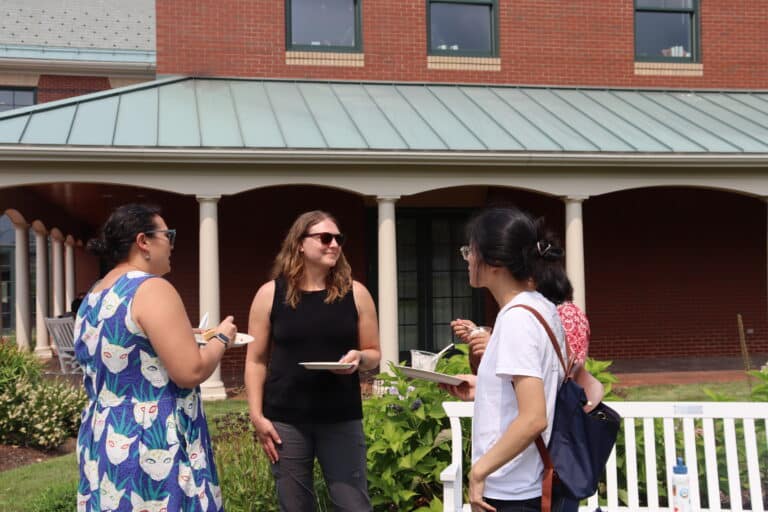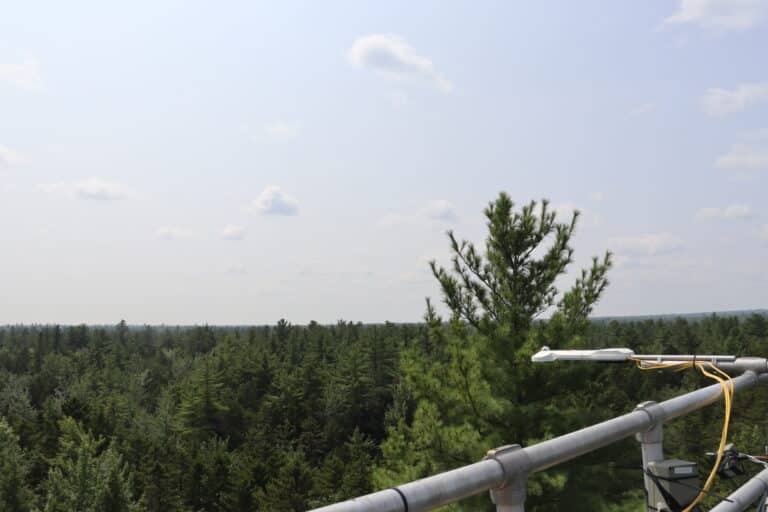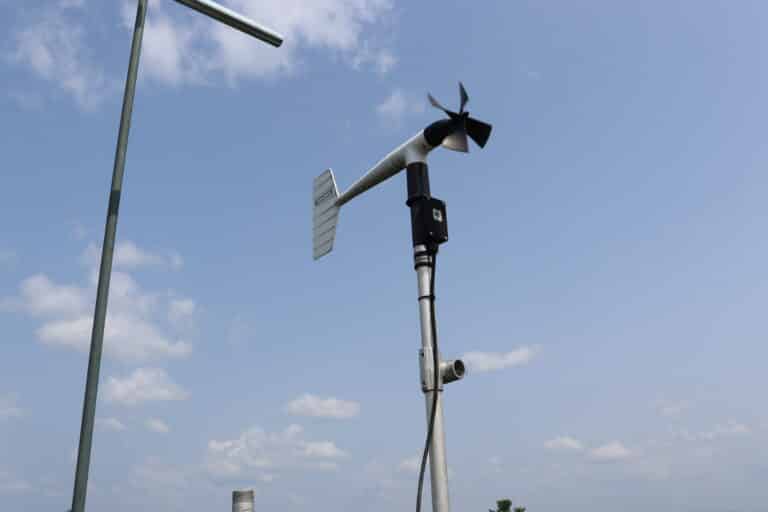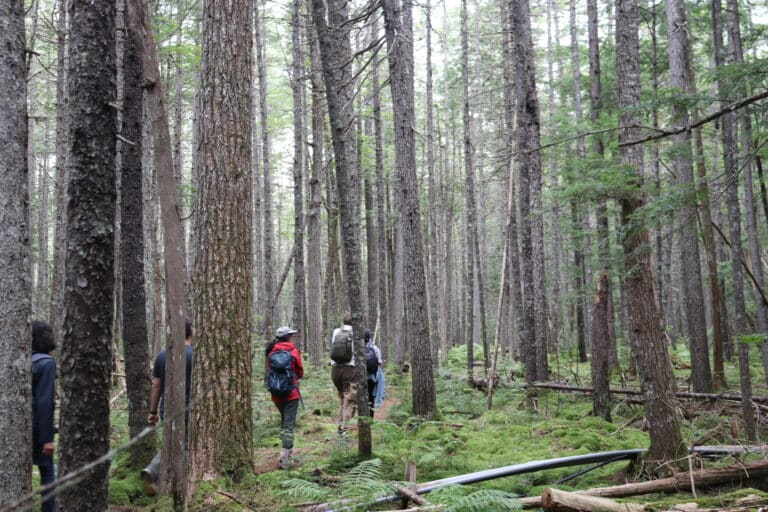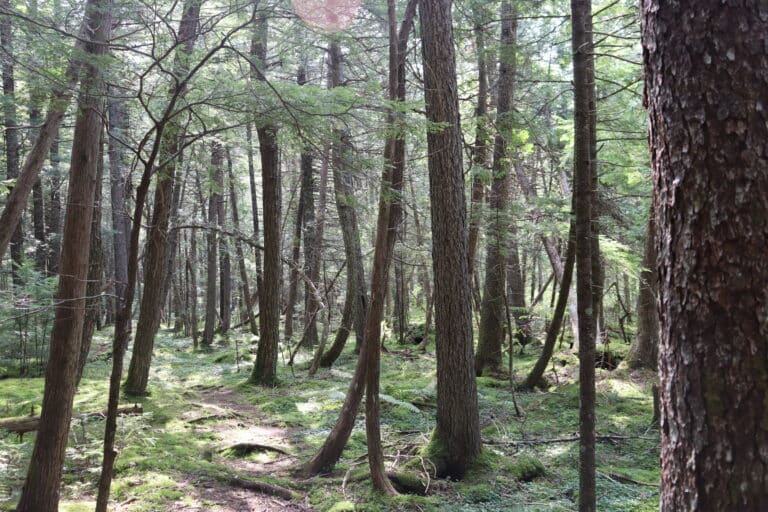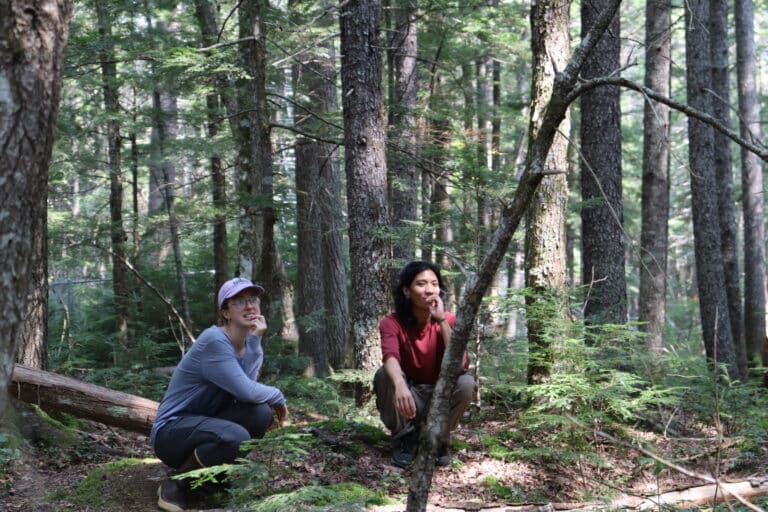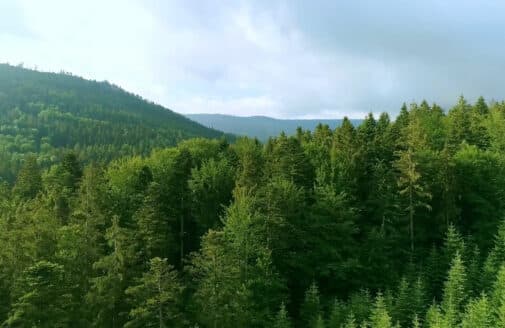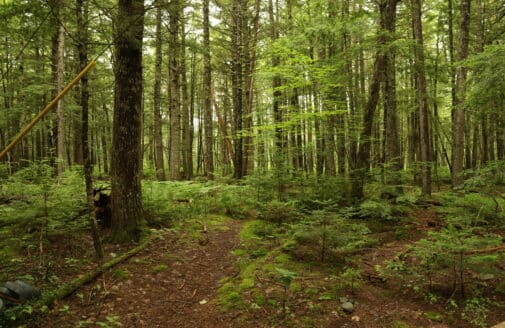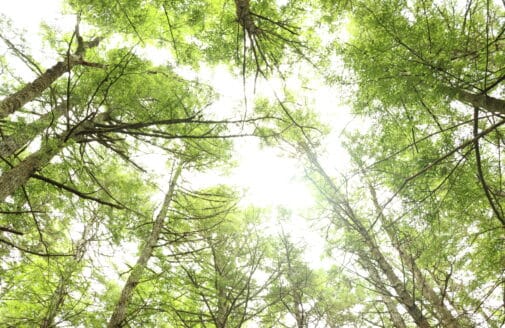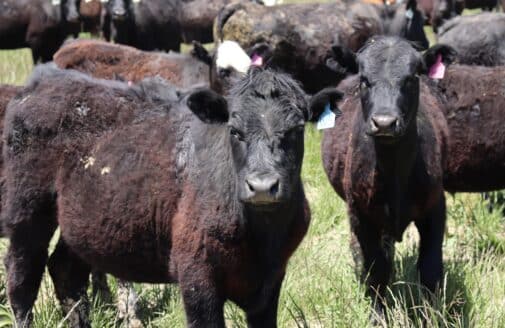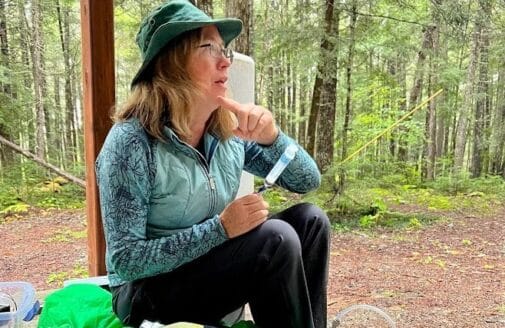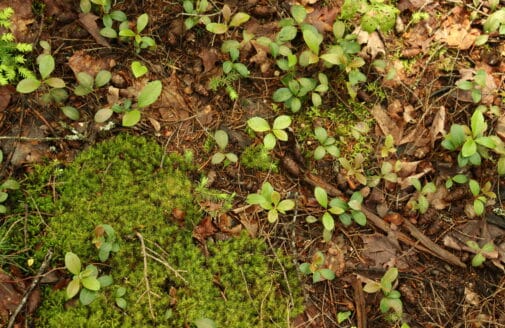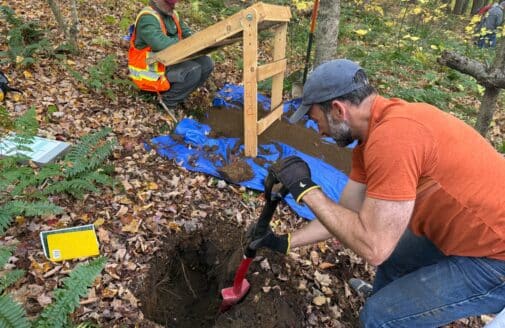Envisioning the future of methane research
Follow along as world-renowned scientists join forces to explore future paths in methane flux research
In-person attendees of the workshop pose for a group photo after the second day of presentations.
photo by Kaeli Bennett
In August, nearly 50 scientists from around the world joined Woodwell Climate’s Dr. Jennifer Watts and Kathleen Savage at The University of Maine Orono for their workshop about methane flux. Participants were invited because of their interest in advancing research on natural methane flux around the world.
Learning
Most of the first two days of the workshop looked like this—a presenter sharing their research while researchers and modelers diligently listened. Presentation topics included historic facts about Howland Research Forest, research at universities and science organizations, and scientific modeling. Dr. Eric Davidson, of the University of Maryland Center for Environmental Science, reminisced on memories of Dr. George Woodwell, founder of Woodwell Climate Research Center, who passed away earlier in the summer. The two were instrumental in the early phases of methane research at Howland.
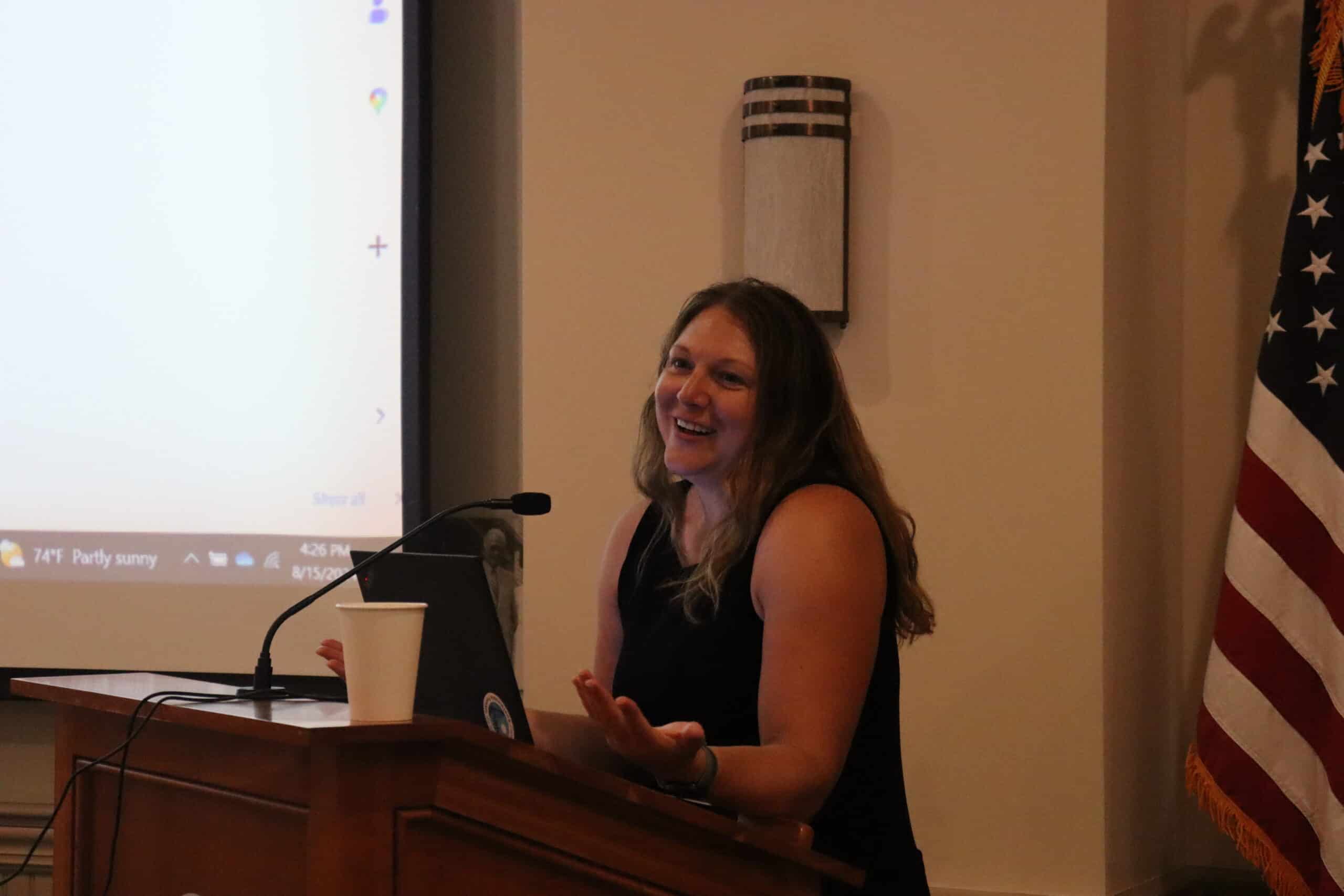
Dr. Jennifer Watts presents conclusions drawn by her breakout group on day two.
photo by Kaeli Bennett
Conversations
Participants created smaller groups on the second day of the workshop to discuss shortcomings in current methane research and ideate its future. Among the many takeaways, one was identified by every group: methane research displays vast disparities globally. Research and resources are desperately needed in some countries, like the Democratic Republic of Congo.
Many of the tools we use to measure methane emissions are not universally available. Eddy covariance towers, which measure the large-scale flux of methane (among other molecules), are very expensive to install and maintain. In regions where towers are not an option, Savage hypothesizes it may be wiser to spend money on creating jobs where methane flux is measured by hand. This economic alternative gets us closer to a global account of methane.

Left to right: Dana Kahn of Emory University, Rachel Poppe of UMaine, Chris Hewetter of UMaine, Dr. Hinsby Cadillo of Arizona State University, and his student David Nguyen prepare for a walk through the forest.
photo by Kaeli Bennett
Exploring
Howland Research Forest is a 220 hectare plot located in the transition zone from eastern deciduous to eastern North American boreal forest. Collaborations with research institutions including the US Forest Service, National Aeronautics and Space Administration (NASA), UMaine Orono, and Woodwell Climate date back to 1987. Three eddy flux towers sit in Howland Forest, constantly measuring Carbon dioxide cycling throughout the site. Howland boasts the second longest flux record, 28 years, following only Harvard Forest.
The large group of workshop participants split into two smaller groups to explore field sites throughout Howland Forest. One group was led by Dr. Shawn Fraver of UMaine, who has been working in the forest for decades. He led each group into the forest along a small trail. They visited numerous sites, including a plot established by NASA, with each tree’s geographic coordinates accurately recorded in a three-hectare radius.
Fraver excitedly showed off the oldest tree in Maine, a yellow birch dating back to the mid-seventeenth century. The birch looked similar to every other tree surrounding it, although a little thicker. This little plot of forest surrounding the yellow birch may include other trees that date back almost as far, creating a stand that has been alive since before the United States was founded.
Savage took charge of another group, showing off her plots with low-to-the-ground machinery measuring source-sink methane transitions in Howland Forest.
Roel Ruzol, site manager of Howland Research Forest, helped a few people get outfitted in safety gear to climb the main tower. The tower reaches above the treeline and measures the carbon respiration and flux of the entire forest. It is one of three towers in the forest—all working together to accurately measure what’s being captured and what’s being emitted by the forest. This flux record supplies comprehensive greenhouse gas emissions data—getting us one step closer to a global account of methane storage.
It is crucial to advance research about methane because it sits outside carbon’s spotlight. Global measurements of carbon stores and atmospheric carbon are more comprehensive, but our knowledge of how much methane is where is less detailed. There are vast disparities in frequency and accuracy of methane research across the world—with a noticeable lack in countries with less resources but just as valuable ecosystems.
“Think of methane budgets like a bank account,” said Savage, “It’s not going to tell you where or how much money to spend, but you better know how much you have.”
Both climate research and climate policy need a full and accurate accounting of where methane is stored, and how much, in order to make effective strides forward. The participants of this workshop intend to publish a Perspectives piece in Nature Communications or a similar journal detailing their conclusions. This collaboration leads the way toward a future with the data to produce change.




